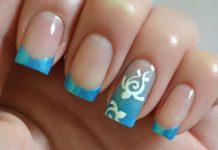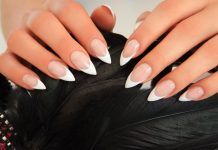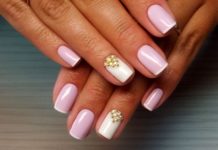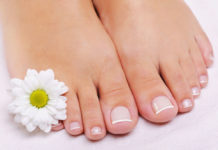Shellac is a relatively new method of manicure, less harmful and more effective than classic nail extension. Today, the procedure for applying gel polish quickly replaces other methods of processing and design of nails. Most girls and women of different ages, keeping up with the times, turn to the masters of manicure, wanting to carry out this procedure. Meanwhile, you can apply the gel yourself. How to make shellac at home? How to avoid financial expenses by refusing the services of a paid specialist?
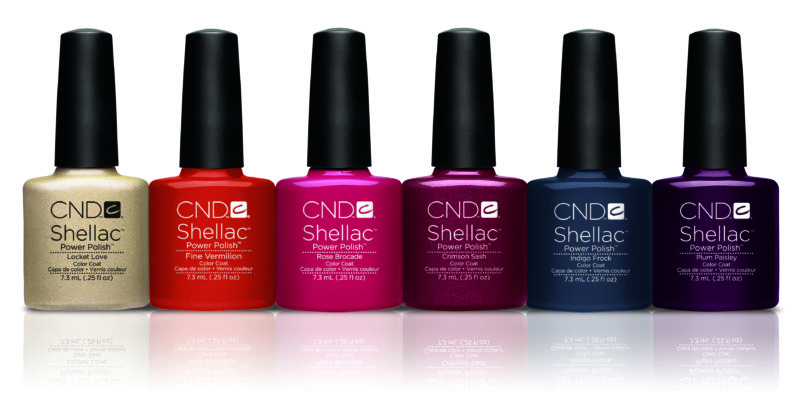
Material Content:
What is Shellac?
Shellac is a logical follower of the gel nail extension technique and is a mixture of polymers combining the properties of varnish and gel.
The composition of the substance includes:
- The film former is a component that, when solidified, forms a coating resistant to mechanical stress. It is the basis of shellac.
- Photoinitiator - an element that absorbs ultraviolet rays and is a catalyst for the hardening of varnish.
- Pigment - the shades that make up shellac give the nails one color or another.
- Thinners - substances with which the consistency of varnish is regulated.
- Functional additives - are necessary to enhance and regulate the properties of varnish-gel (color intensity, resistance to abrasion).
Visually, shellac is the basis of a medium-liquid consistency.The color of the composition varies depending on the pigment used. Gel polishes can be mixed with each other, while receiving new color shades.
Drying of the varnish occurs under the influence of open sunlight or the light of a UV lamp. Coatings, dried outside the light, are not very resistant, have a long polymerization time. Shellac, for the drying of which the lamp was used, has high strength and remains intact for about two weeks.
It is interesting to know: it is generally accepted that shellac includes the natural polymer shellac, an organic resin produced by some tropical insects. In reality, not a single shellac producer claims the presence of this polymer in the composition of its products.
If you strictly approach the issues of terminology, then “shellac” and gel polish are not quite the same thing. The fact is that shellac is the name of a product brand. That is, the term is nothing more than the name of one of the varieties of gel polish. Despite this, most women use both terms to generically denote a product. Terms have actually become synonymous.
The advantages and disadvantages of shellac over conventional varnish
Like any other manicure, shellac has a number of advantages and disadvantages.
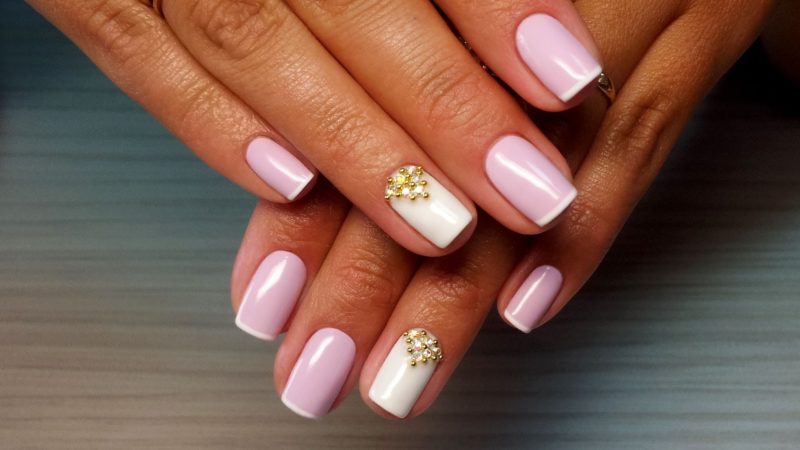
The first include the following:
- natural appearance;
- the cost is lower than that of acrylic nail extensions;
- a layer of shellac does not affect the growth of its nail;
- helps to improve the condition of the nail structure;
- dries quickly and lasts a long time;
- gives shine to the nail;
- It has a huge number of colors (about 250).
The negative qualities of shellac include the need for special devices for its application and drying. This factor is the reason that one of the most modern methods of processing nails is rarely used at home.
What coatings to choose
In modern cosmetology, 3 varieties of shellac are used:
- single phase;
- two-phase;
- three phase.
Salons and private craftsmen usually use three-phase varnishes, consisting of three components: the base layer, the color layer, and the top. The base layer plays the role of double-sided tape, securely fixing the upper layer on the nail plate. The color layer contains pigment and is used to create the primary color. Top protects the coating from external influences and allows the use of stickers and drawings on nails.

Nails are treated with three-phase shellac when they want to create an additional design on top of it or to achieve the longest possible preservation of the coating. The sticky layer of the top after complete drying of the varnish is removed with a special tool.
Single-phase shellac contains only one fraction, combining the properties of the top, base and color base. Such varieties of gel polish are easy to apply, but do not have high strength and do not allow you to create an artistic nail design. They are often used in cases where a manicure needs to be done quickly, but there is no need for its long-term preservation.
Two-phase varnish is the "middle ground" between single-phase and three-phase composition. It is quite durable and stable, however, it is impossible to apply additional patterns to it without using a top. A variation of the procedure using two-component varnish can be performed by women who do not need additional nail designs, but want to have a sufficiently strong coating layer.
In addition to differences in the number of components, shellacs also differ in the effects created. They can change color depending on air temperature or time of day, have patterns, be dull or glossy. The choice of varnish according to these criteria depends solely on the personal preferences and style of the woman.
What is needed for shellac: tools, materials
What is needed for shellac to apply it at home?
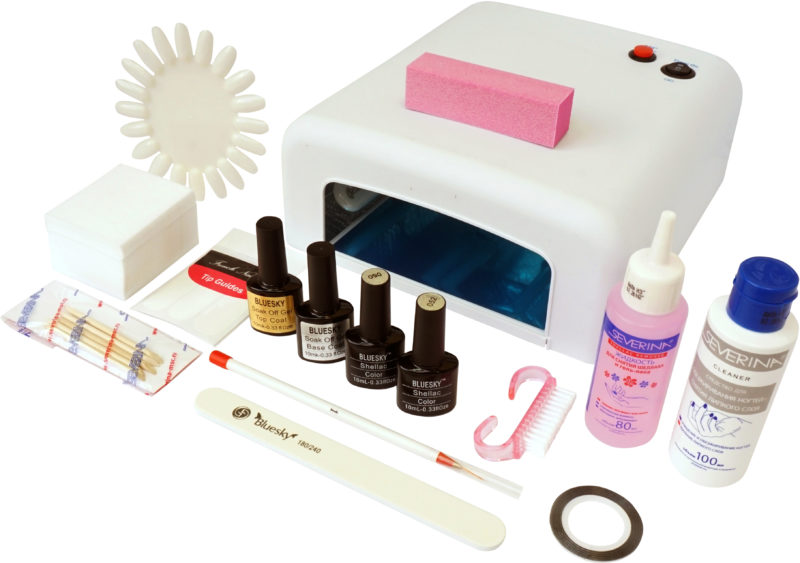
The procedure requires a certain set of tools and drugs, such as:
- nail file;
- cuticle remover;
- grinding plate;
- alcohol or other degreaser;
- lint-free cloth;
- moisturizing oil;
- UV lamp for drying.
It is recommended that you prepare everything you need before starting the procedure. Well, if there is an assistant. Putting several layers of varnish on the left and right hand yourself is quite inconvenient.
It is interesting to know: for nail processing it is necessary to use a nail file, and not scissors that violate the structure of the nail. Scissors cut surfaces are poorly suited for applying varnish.
Stages of applying shellac at home
The process of applying varnish consists of two main stages: preparing the nail plate and directly creating the varnish layer. The process should be considered on the example of three-phase shellac.
Read also: how to remove shellac at home
Preparation: work with cuticles, degreasing the surface of the nail
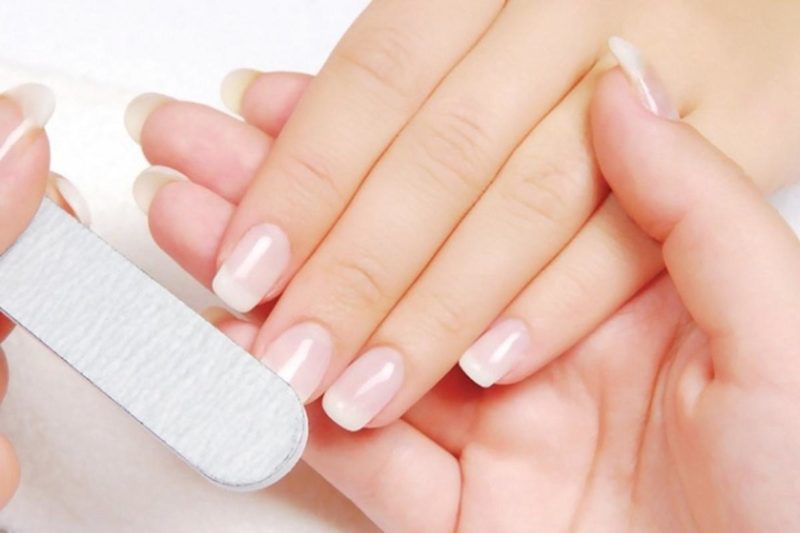
The stage of preparation for applying shellac is as follows:
- Hands are thoroughly washed, but not steamed in hot water.
- Nail with the help of a nail file give the desired shape, while not affecting the skin. Dust consisting of nail filings is shaken off with an antistatic cloth or brush.
- Apply cuticle remover. To this end, the composition “cuticle eraser” is often used. The drug should be distributed carefully and evenly. After the unnecessary particles of the skin die off, they are removed with a cotton swab. The composition itself is thoroughly washed off with running water, and the hands are dried.
- The nail is cleaned to a matte state with a sanding plate. If roughness is felt on it, use a sanding pad with a finer abrasive. Dust again with a napkin.
- Thoroughly treat the nail plate and the areas around it with alcohol or a degreaser. Do not touch the treated areas with your fingers.
On this preparation for the application of shellac is considered complete.
Note: before starting the preparation, it is necessary to carefully inspect the nail for residual old varnish. If the previous coating was not completely removed, shellac will fall unevenly and poorly.
Base layer
The base layer of the coating is applied to the nail plate with a thin layer, allowing the varnish to dry in a short time. In this case, the composition should not fall on the periungual ridges. After application, the varnish is dried on a UV lamp for 10 seconds.
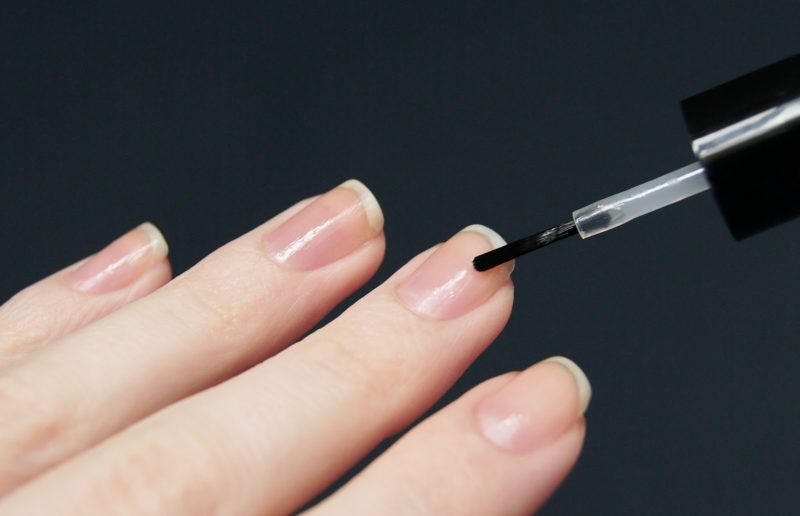
Lamp power should be at least 36 watts. If this rule is not observed, the drying time increases, which leads to the formation of matte spots on the base layer. Such phenomena are considered unacceptable.
Application of colored varnish
The color coating is applied after the base has completely dried. In this case, the sticky fraction of the base layer is not removed. Application of color should be done in a thin layer. To get a more intense shade, the varnish is applied twice, with intermediate drying for 10 seconds. The use of one thick layer instead of two thin ones leads to the formation of bubbles.
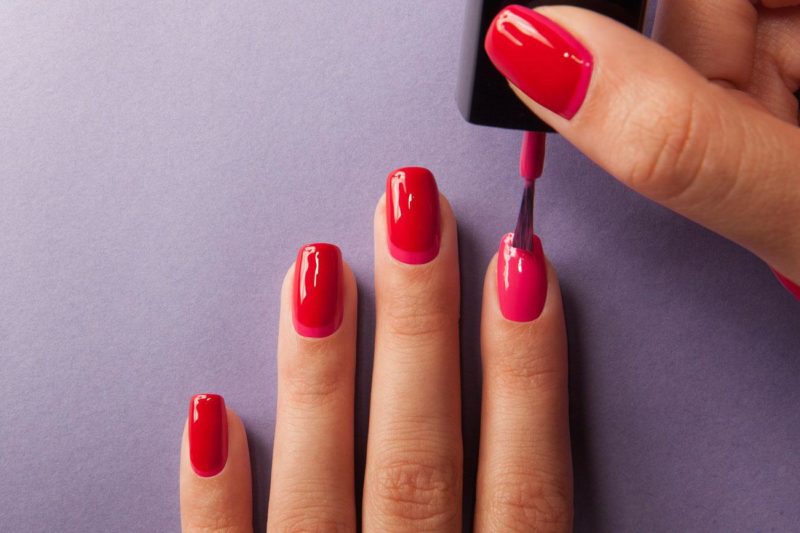
Before applying the varnish is recommended to stir. For this, the bubble is turned over several times in the palms of the hands. It is possible to mix two compositions of different colors to obtain new shades. It is better if both varnishes intended for mixing are from the same manufacturer. This will avoid damage to the material due to the incompatibility of some of its components.
Topcoat - Topcoat
The top layer of varnish is applied to the nail with a thick layer. In this case, the edges of the nail plate, the area around the rollers and the cuticle should be carefully sealed. After applying the top, it is dried under the lamp for 2 minutes. After drying, the pigment remains between the base and top. This protects it from abrasion.

The sticky layer formed on the top should be removed with a degreaser and a lint-free cloth.The use of gauze or cotton pads is unacceptable, as they leave fibers that can stick to the coating. The layer is usually easily and completely removed with alcohol. Do not use acetone or other substances with solvent properties.
After the shellac has completely dried, it is recommended that you treat your hands with moisturizing oil. It is carefully rubbed into the periungual area until completely absorbed. This approach avoids dry skin, which is a side effect of the use of ultraviolet radiation.
Note: correctly applied coating is smooth and glossy (if varnishes with a matte effect are not used), the color is evenly distributed. The presence of bubbles, spots or roughness indicates a violation of the technology of work.
Creative
The strength of the top layer of shellac allows the use of additional design elements. Here, the master is given the opportunity to show imagination.
Color mixing
Color mixing is performed at the stage of applying the pigmented layer. Everything here resembles a children's game with watercolors. We mix blue with white, we get blue, red with white - pink. If yellow varnish is added to the last mixture, the composition will acquire a beige color.
It is important that the varnishes are compatible with each other. Otherwise, the experiment will fail, and the unlucky coquette will raise the question of how to remove shellac, which has just been applied and is by no means cheap.
Glitter Decor
To decorate nails, dry spangles of different sizes can be used. They are applied before drying the top. To do this, use a small brush to dial the required number of jewelry and shake them off the nail from a distance of 2-3 cm. After that, the top is dried and a new layer is applied.

Small sparkles can be added directly to the color layer. To do this, the material is poured into the varnish before it is applied and mixed thoroughly, rolling the bottle between the palms. Such a composition should be used immediately after preparation, otherwise the sparkles will settle to the bottom and will not fall onto the nail.
Note: to avoid the procedure for preparing varnish with sparkles, you can use its finished version. The rules for applying shellac with the addition of sparkles do not differ from the above.
French manicure
A classic french manicure is a small, with a protrusion of 3-4 mm, nail with an oval or square ending. As a rule, the nail plate has a natural shade, and its edge is painted white. This solution is considered universal and suitable for any outfits and events.
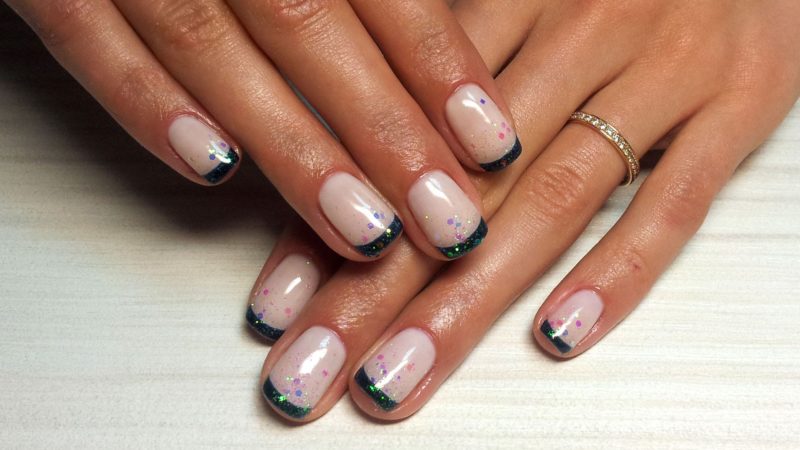
Today's masters of nail art often resort to non-standard solutions. So, nails are often made pointed, apply relief images or graphic patterns, while maintaining common features of the "French" style. On the nails you can often find voluminous white roses, clouds and other decorations, the choice of which is limited only by the imagination of the author and the requirements of common sense.
We decorate shellac patterns
Shellac patterns can be made directly using shellac of a different color or acrylic paints. Shellac patterns are drawn using a needle or stapling kit. Each decor element is separately dried under the lamp before applying the next.
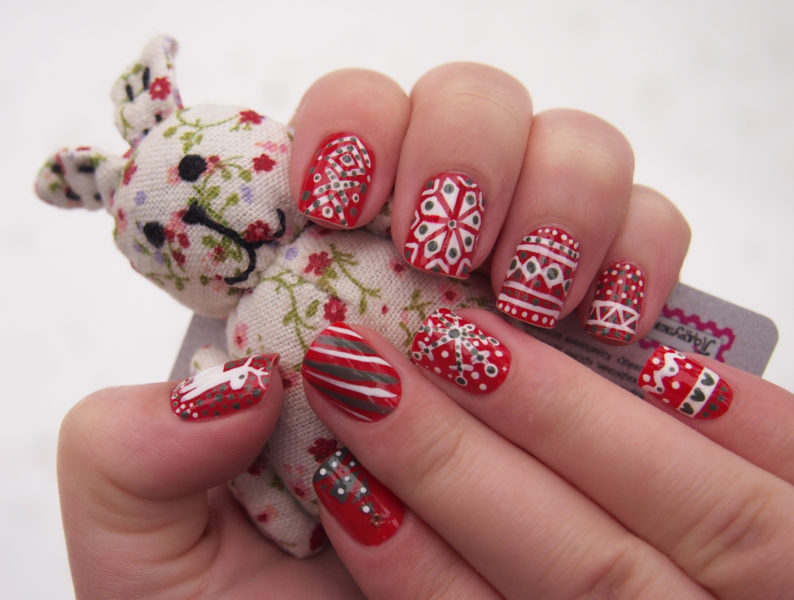
Acrylic patterns do not require drying. However, in order to preserve them for a long time, a top coat should be applied to them. For drawing a picture, a thin brush made of natural wool, dots, and a toothpick can be used.
How and how to remove shellac at home?
Still washing shellac in salons, spending extra money on this? This is not necessary today. You can remove the coating at home.
For this you need:
- Nail polish remover.
- Pusher or orange stick.
- Foil.
- Cotton pad.
Before starting the procedure, wash and dry your hands thoroughly. You can treat the nails with a degreaser. After that, a piece of a cotton pad dipped in a tool capable of splitting varnish coatings is applied to each nail.The nail phalanx of each finger is wrapped with foil, fixing cotton wool with solvent and not allowing the latter to evaporate.
Keep compresses necessary 10-15 minutes. This time is enough for the varnish to dissolve and come off the nail. After removing the foil, the remnants of the varnish are removed with a disk dipped in acetone and an orange stick. Hands are washed again, dried and treated with a moisturizer.
Note: to remove shellac, do not use aggressive industrial solvents. They are too high in concentration and can cause severe chemical burns.
In general, gel polishes are one of the best manicure products that modern cosmetology has today. Shellacs are safe, resistant to environmental influences, and look beautiful and elegant. Unfortunately, they are unlikely to become as widespread as regular nail polishes. This is due to the complexity of coating and the need for special equipment for processing nail plates, drying and removing shellac.


